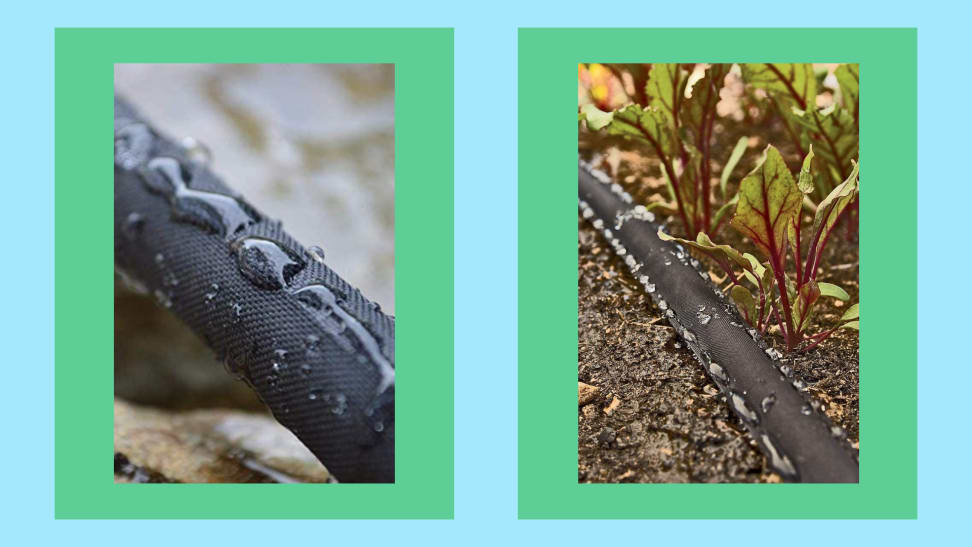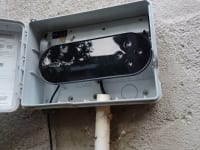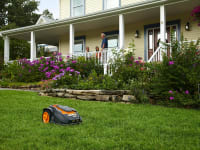 Credit:
Reviewed / Rocky Mountain Goods
Credit:
Reviewed / Rocky Mountain Goods
Products are chosen independently by our editors. Purchases made through our links may earn us a commission.
A healthy garden is a hydrated garden. A good rainfall helps to an extent, but if you want to keep your landscape looking lush even when Mother Nature isn’t cooperating, you’ll have to supplement with additional watering.
A soaker hose is one type of garden hose that makes it easy to keep soil and plant roots moist without a lot of work on your part. Whether you're on a mission to maintain a thriving vegetable garden, strong roots for newly planted trees, or vibrant flower beds that are the envy of your neighbors, here’s what you need to know about soaker hoses. Shop soaker hoses on Amazon
What is a soaker hose?
Soaker hoses are made of rubber, PVC, fabric, or another soil-safe material. The hose style features thousands of pores throughout the tubing. This is where the water emerges for a slow yet continuous flow directly into the soil. The steady flow of water absorbs into the soil better than a soak from a hose or sprinkler system, which can leave puddles of water in the ground.
A soaker hose lives up to its name and allows the water to penetrate deep into the soil. If you’ve got a small garden, you might stand there with the hose to give it a drink, but even so, a shorter soaker hose will save you time.
Soaker hoses come in different lengths, usually ranging from 25-feet to 100-feet.
How does a soaker hose work?
Unlike a sprinkler system that typically requires professional installation, a soaker hose can be set up by any novice gardener. All you have to do is wind it through the garden and around the bases of the plants you want to hydrate. For vegetable gardens, one option is to weave the hose between the rows of growing plants.
For trees and shrubs, David Angelov, CEO of PlantParenthood, recommends wrapping a soaker hose around the base of each, about a foot away from the trunk, allowing for the water to drip down onto the root ball.
For more mature trees, Angelov recommends placing a soaker hose at the drip line (the area where rainwater falls off the outer layer of the leaves) to mimic rainfall, which is about the rate at which soaker hoses seep water.
Once a soaker hose is in place, hide it under a few inches of mulch. Don’t bury it under the soil; a thin layer makes it easy to move the hose when needed while still offering enough coverage to prevent sun-related damage.
The size and type of your landscape will help determine how long to run the soaker hose for but typically about 30 minutes twice a week is the right amount of water.
A soaker hose can be turned on/off manually at the faucet, but if you’re worried about forgetting to shut it off, try a smart hose timer for remote control over the water flow.
Soaker hose vs. sprinklers or drip irrigation
For the most part, soaker hoses, like sprinkler systems, are a set-it-and-forget-it tool for your yard. While a sprinkler system does provide excellent hydration, particularly for a lawn, it uses a lot of water.
Soaker hoses aren't designed for full-yard irrigation and are best used in particular areas—making it a more efficient watering option than an in-ground irrigation system. A soaker hose also costs significantly less than installing a sprinkler system in your yard, which can run about $2,500 on average.
A drip irrigation system is closer to the concept of a drip hose in that when it is engaged, it also provides a low yet continuous flow of water to the ground.
The average professional installation ranges from $1,800 to $2,500, depending on the size of your yard and what you’re growing. However, if you have a tiny garden, you can attempt this on your own for under $50 with a drip irrigation kit like this one from MIXC.
But for a quick installation that's easy to adjust, a soaker hose is what you want.
When to use a soaker hose
A soaker hose is ideal for using at the bases of trees, flowers, and vegetable gardens. The hose style is also great for new plantings that need to stay hydrated for early growth. Again, place the hose near the base of the plants, winding it around any individual plantings that need extra hydration.
Angelov says that a soaker hose can also complement an existing sprinkler system, particularly if your sprinkler heads can’t reach certain plants that need water.
“The whole point is to not worry about water for the new plant,” Angelov says.
When not to use a soaker hose
While a soaker hose is an indispensable tool for many landscapes, you should still stick with a sprinkler for your lawn.
Soaker hoses typically only drench one to three feet of soil around the hose, leaving you to continuously wind (and then unwind) a soaker hose through your lawn for adequate coverage, defeating the purpose of this low-maintenance lawn tool.
Angelov says to pay attention to what type of plants you have in your garden and how much water they need to survive.
“It wouldn't be good for anything like a juniper [a tree that thrives in well-drained soil] to sit in water,” Angelov says.
Soaker hoses for gardens can save time and water. It might take a bit of trial and error to find out how much time you’ll need to keep it on each week, but once you do, your garden will thrive.


